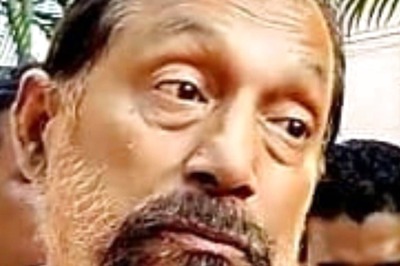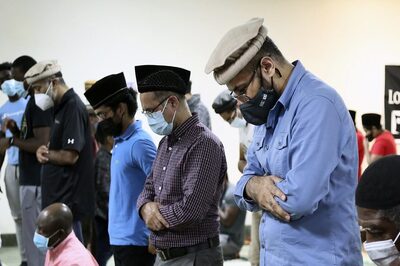
views
Paper I
Microbiology and Plant Pathology
Viruses, bacteria, and plasmids-structure and reproduction. General account of infection, Phytoimmunology. Applications of microbiology in agriculture, industry, medicine and pollution control in air, soil and water.
Important plant diseases caused by viruses, bacteria, mycoplasma, fungi and nematodes. Mode of infection and dissemination. Molecular basis of infection and disease resistance/defence. Physiology of parasitism and control measures. Fungal toxins.
Cryptogams
Algae, Fungi, Bryophytes, Pteridophytes-structure and reproduction from evolutionary viewpoint. Distribution of Cryptogams in India and their economic potential.
Phanerogams: Gymnosperms
Concept of Progymonosperms. Classification and distribution of Gymnosperms. Salient features of Cycadales, Conferrals and Gnetales, their structures and reproduction. General account of Cycadofilicales, Bennettitales and Cordaitales.
Angiosperms: Systematics, anatomy, embryology, palynology and phylogeny.
Comparative account of various systems of Angiosperm Classiification. Study of angiospermic families–Magnoliaceae, Ranunculaceae, Brassicaceae (Cruci-ferae), Rosaceae, Leguminosae, Euphorbiaceae, Malvaceae, Dipterocar-paceae, Apiaceae (Umbelliferae), Asclepiadaceae, Verbenaceae, Solana-ceae, Rubiaceae, Cucurbitaceae, Asteraceae (Composite), Poaceae (Gramineae), Arecaceae (Palmae), Liliaceae, Musaceae, Orchidaceae.
Stomata and their types. Anomalous secondary growth, Anatomy of C 3 and C 4 plants. Development of male and female gametophytes, pollination, fertilization. Endosperm–its development and function. Patterns of embryo development. Polymbryony, apoxmix, Applications of palynology.
Plant Utility and Exploitation
Origin of cultivated plants, Vavilov's centres of origin. Plants as sources for food, fodder, fibres, spices, beverages, drugs, narcotics, insecticides, timber, gums, resins and dyes.
Latex, cellulose Starch and their products. Perfumery. Importance of Ethnobotany in Indian context. Energy plantation. Botanical Gardens and Herbaria.
Morphogenesis
Totipotency, polarity, symmetry and differentiation. Cell, tissue, organ and protoplast culture. Somatic hybrids and Cybrids.
PAPER II
Cell Biology
Techniques of Cell Biology.
Prokaryotic and eukaryotic cells -structural and ultrastructural details.
Structure and function of extracellular matrix or ECM (cell wall) and membranes-cell adhesion, membrane transport and vesicular transport. Structure and function of cell organelles (chloroplasts, mitochondria, ER, ribosomes, endosomes, lysosomes, peroxisomes, hydrogenosome).
Nucleus, nucleolus, nuclear pore complex. Chromatin and nucleosome. Cell signalling and cell receptors. Signal transduction (G-1 proteins, etc.).
Mitosis and meisdosis; molecular basis of cell cycle. Numerical and structural variations in chromosomes and their significance.
Study of polytene, lampbrush and B-chromosomes–structure, behaviour and significance.
Genetics, Molecular Biology and Evolution
Development of genetics, and gene versus allele concepts (Pseudoalleles). Quantitative genetics and multiple factors. Linkage and crossing over–methods of gene mapping including molecular maps (idea of mapping function). Sex chromosomes and sexlinked inheritance, sex determination and molecular basis of sex differentiation. Mutation (biochemical and molecular basis). Cytoplasmic inheritance and cytoplasmic genes (including genetics of male sterility). Prions and prion hypothesis.
Structure and synthesis of nucleic acids and protines. Genetic code and regulation of gene expression. Multigene families.
Organic evolution-evidences, mechanism and theories. Role of RNA in origin and evolution.
Plant Breeding, Biotechnology and Biostatistics
Methods of plant breeding -- introduction, selection and hybridization (pedigree, backcross, mass selection, bulk method). Male sterility and heterosis breeding. Use of apomixis in plant breeding. Micropropagation and genetic engineering–methods of transfer of genes and transgenic crops; development and use of molecular markers in plant breeding.
Standard deviation and coefficient of variation (CV). Tests of significance (Z-test, t-test and chi-square Tests). Probability and distributions (normal, binomial and Poisson distributions). Correlation and regression.
Physiology and Biochemistry
Water relations, Mineral nutrition and ion transport, mineral deficiencies. Photosynthesis–photochemical reactions, photophosphorylation and carbon pathways including C pathway (photorespiration), C, C and CAM pathways. Respiration (anaerobic and aerobic, including fermentation–electron transport chain and oxidative phosphorylation. Chemiosmotic theory and ATP synthesis.
Nitrogen fixation and nitrogen metabolism. Enzymes, coenzymes, energy transfer and Energy conservation. Importance of secondary metabolites. Pigments as photoreceptors (plastidial pigments and phytochrome).
Photoperiodism and flowering, vernalization, senescence. Growth substances-their chemical nature, role and applications in agri-horticulture, growth indices, growth movements. Stress physiology (heat, water, salinity, metal).
Fruit and seed physiology. Dormancy, storage and germination of seed. Fruit ripening -- its molecular basis and manipulation.
Ecology and Plant Geography
Ecological factors. Concepts and dynamics of community. Plant succession. Concepts of biosphere. Ecosystems and their conservation. Pollution and its control (including phytoremediaion).
Forest types of India -- afforestation, deforestation and social forestry. Endangered plants, endemism and Red Data Books. Biodiversity. Convention of Biological Diversity, Sovereign Rights and Intellectual Property Rights. Biogeochemical cells. Global warming.



















Comments
0 comment